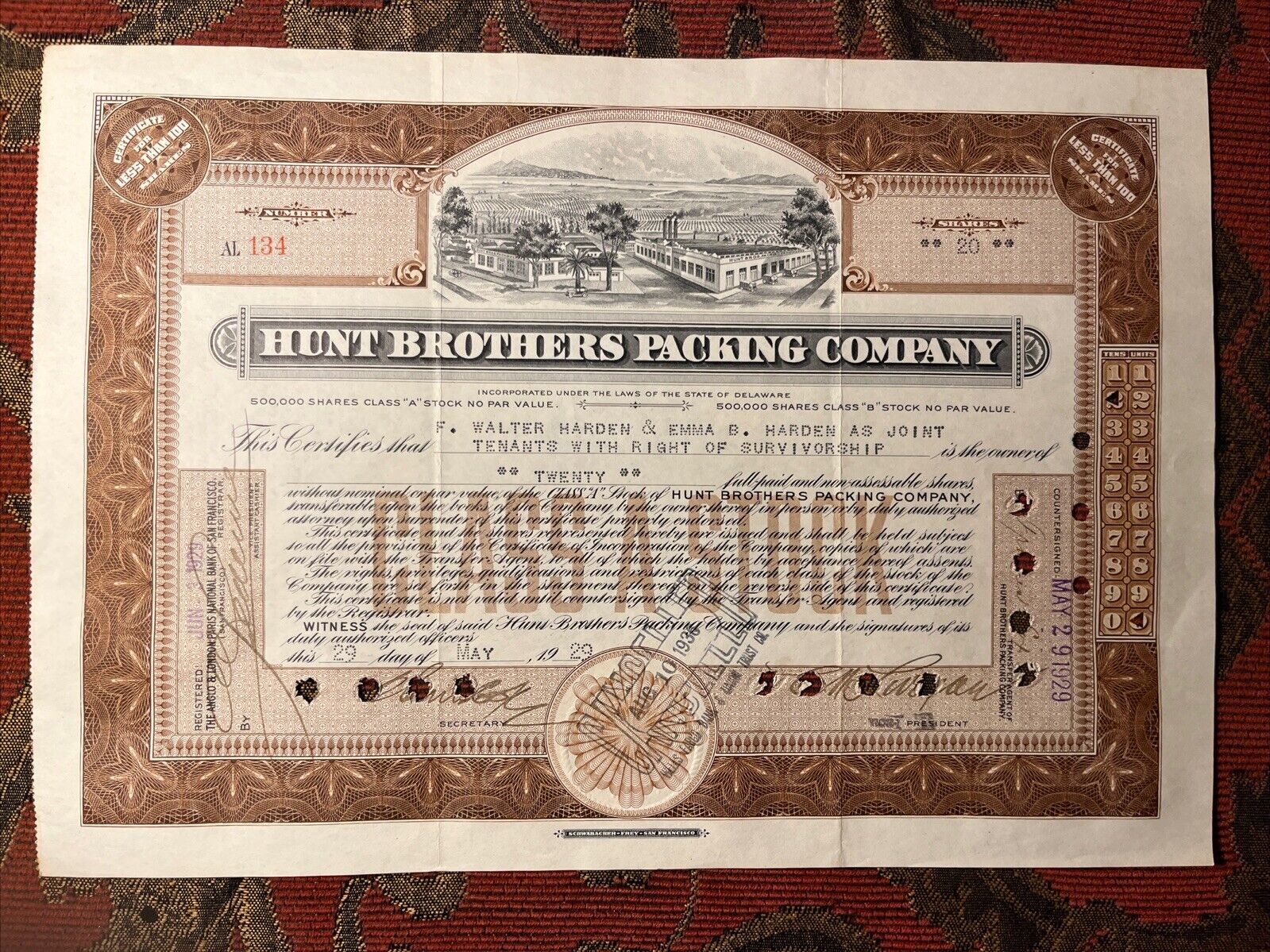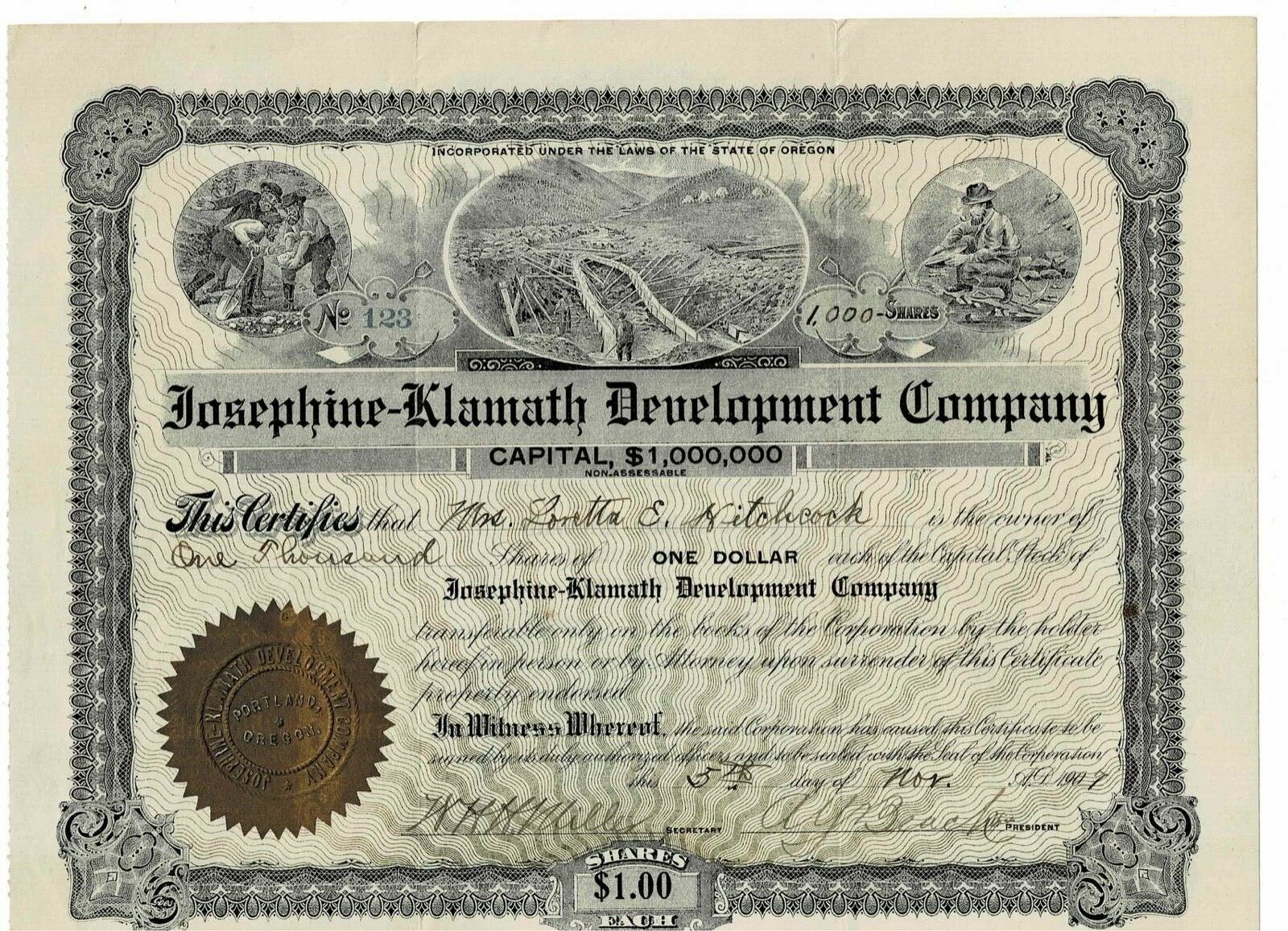-40%
American Bank Note Company > banknote printer stock certificate share
$ 1.05
- Description
- Size Guide
Description
Old Stock Yard Collectible Stock and Bond CertificatesAmerican Bank Note Company
Original stock certificate
New York
Beautiful certificate with attractive vignette
More information on the American Bank Note Company:
The American Bank Note Company was a major worldwide engraver of national currency and postage stamps. Currently it engraves and prints stock and bond certificates.
History
Robert Scot, the first official engraver of the young U.S. Mint, began the company that would eventually grow into the nation’s premier high security engraving and printing firm, the American Bank Note Company. Founded in 1795 as Murray, Draper, Fairham & Company (after Scot's three partners), the company prospered as the young United States population expanded and financial institutions blossomed. Its products included superior quality stock and bond certificates, paper currency for the nation’s thousands of state-chartered banks, postage stamps (from 1847 to 1894), and a wide variety of other engraved and printed items. Following the Panic of 1857, seven of the nation’s most prominent security printers merged to form the American Bank Note Company on April 29, 1858. The new company made New York City its headquarters. Less than two years later, a handful of the remaining independent bank note printers merged to form the National Bank Note Company.
To be close to the stock exchanges, brokerage firms, and banks in lower Manhattan, the American Bank Note Company established its New York City headquarters in the Merchants Exchange Building at 55 Wall Street. The company moved its office and plant to 142 Broadway (at the corner of Liberty Street) in 1867, to another new facility at 78-86 Trinity Place in 1882, and again to 70 Broad Street in 1908. The first paper currency was circulated by the Treasury Department following the outbreak of the Civil War. Congress passed authorizing legislation for million worth of these “Demand Notes” on July 17 and August 5, 1861. Under contract with the government, the novel paper money, called “greenbacks” by the public, was produced by the American Bank Note Co. and the National Bank Note Co. A total of 7.25 million notes were produced in denominations of , , and . In an interesting historical sidelight, American and National were also producing paper money for the Confederacy at the same time. Following the initial production of U.S. currency by the government’s Bureau of Engraving and Printing in 1862, ABNCo sought a new source of demand for its services. They found it in foreign lands. By the latter part of the 19th century the company was engraving and printing currency and other high-security items for 48 countries.
In 1879, the security printing industry’s second major consolidation took place. American absorbed the National Bank Note and Continental Bank Note companies. In 1887, ABNCo won the second four-year contract to engrave and print Postal notes for the U.S. post office. (New York’s Homer Lee Bank Note Company produced these notes during the first contract period.) American assigned Thomas F. Morris, its Chief Designer, the task of re-designing this early design. The paper for this contract (as for all Postal Notes and a massive number of official U.S. high security documents) was produced by Crane and Co. of Dalton, Massachusetts. In 1894, ABNCo completed the final contract for the private printing of American stamps. Perhaps their most popular stamps were the one cent to issues commemorating the 1892-93 Columbian Exposition in Chicago. On July 1, 1894 American delivered its entire stamp-producing operation to the U.S. Bureau of Engraving and Printing in Washington, D.C., where U.S. stamps are still printed. In 1943–1944 American Bank Note Company was contracted by the United States Government's Bureau of Engraving and Printing to produce the Overrun Countries series stamps. ~Wikipedia
Old Stock Yard Policies and FAQs
Please visit my eBay store
– any combined certificate purchased
ship free
with auction items!
Shipping and Handling Charges:
.99 for one certificate to the U.S.
.99 for one certificate to the rest of the world
Additional, combined certificate purchases
ship for free
!
Shipping Method and Timing:
Certificates are carefully packaged in poly bags and rigid envelopes to protect them during shipment. Items are sent via U.S.P.S. – usually first class, but occasionally priority or parcel post. Most items will be mailed within 48 hours of payment.
Payment Method:
In accordance with
eBay
policy, my listings are setup to accept
Paypal
payments. Sellers are allowed to accept other forms of payment only if the buyer requests another payment method – so if you prefer to pay using a method other than Paypal, please let me know.
Return Policy:
Items can be returned for any reason within 15 days of purchase. A full refund will be issued upon receipt of the return if the item is the same condition it was in upon delivery.
FAQs:
Are you your certificates authentic or copies?
Everything
I sell is original and authentic. I do not sell copies or reproductions.
Is the certificate pictured the exact one I will receive?
Usually, yes. Occasionally, I do list certificates of the same type without rescanning. In this case, the certificate you receive will be virtually identical (same color, size, vignette, etc.) to the one pictured. Again, if you ever receive anything from me you are not 100% pleased with, you can return it for a full refund.
What is the best way to store, protect, and display my certificate collection?
The best thing, by far, that I have come across for storing certificates are
profolios and sleeves made by Itoya
. You can purchase them in my eBay store. I have several sizes available.
Do the certificates you sell have financial value?
No, these certificates are sold as collectibles only; although they are authentic, they no longer hold financial value.









